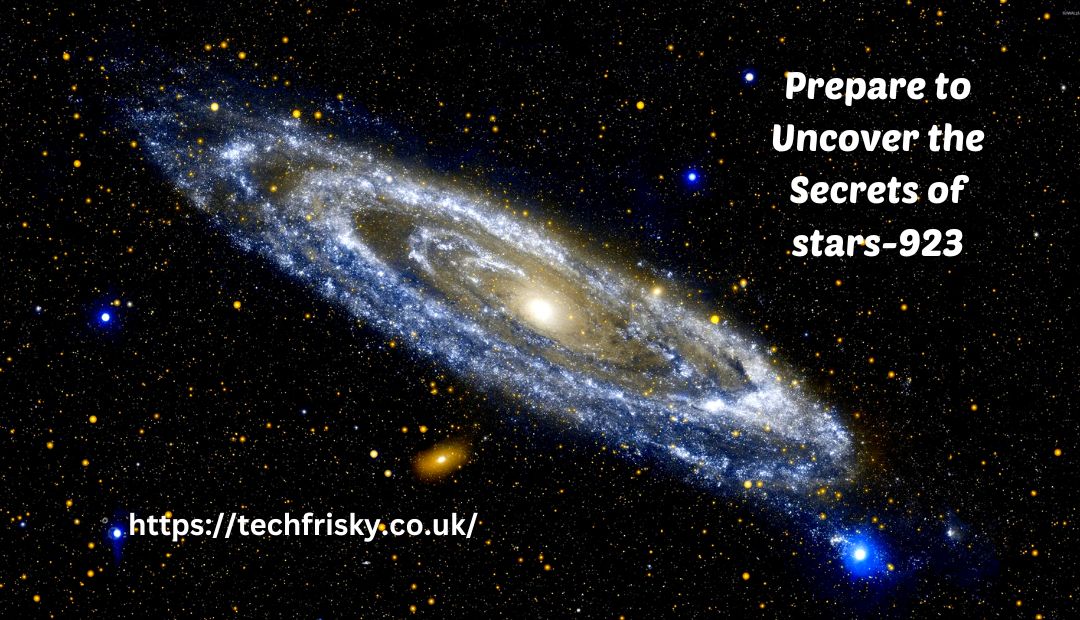The stars-923 are the center of the cosmos, a huge and fascinating place. These celestial bodies play a pivotal role in the intricate dance of our universe, influencing everything from planetary systems to galactic dynamics. But what makes stars-923 so special?
Unveiling the Mysteries of stars-923
As we embark on this journey, prepare to uncover the secrets hidden within these luminous giants. From their formation in stellar nurseries to the breathtaking process of nuclear fusion that fuels their brilliance, every aspect contributes to maintaining cosmic balance. Join us as we explore the captivating world of stars-923 and reveal how they shape our understanding of the universe around us.
Guardians of the Galactic Ecosystem’s Balance
The stars-923 are more than just twinkling lights in the night sky; they are essential guardians of the galactic ecosystem. Their gravitational pull influences nearby celestial objects, ensuring stability within their systems. This balance fosters a thriving environment for planets and potential life.
Supernova explosions
Beyond their physical presence, stars-923 contribute to chemical enrichment through supernova explosions. These events spread vital elements across space, fueling new star formation and planetary development. In this intricate web of interactions, stars 923 remain pivotal players in maintaining harmony throughout the universe.
Unveiling the Mysteries of stars-923
The Astronomers and stargazers alike have been enthralled with Stars-923’s mysterious presence. These celestial bodies serve as the backbone of our universe, influencing everything from galactic formation to the evolution of planetary systems. Each star emits light and heat that sustain life on nearby worlds, creating an intricate web of cosmic relationships.

The Ongoing Exploration
Research into stars-923 continues to unveil their secrets. By studying their properties, scientists gain insights into gravitational forces at play in galaxies and how these magnificent objects affect the space around them. The story of stars 923 is still unfolding.
Understanding Stellar Nurseries
Stellar nurseries are the vibrant cradles where stars-923 begin their journey. These regions, rich in gas and dust, provide the essential ingredients for star formation. Within these cosmic clouds, gravity pulls matter together, igniting the process that will give birth to new celestial bodies.
Igniting the Cosmos
As temperatures rise in these dense cores, nuclear fusion sparks into life. Stars 923 emerge from this tumultuous environment as they shed their cocoon of material. This transformation marks the beginning of a radiant existence that illuminates galaxies and contributes to the intricate balance of our universe.
Deciphering Nuclear Fusion
Nuclear fusion in stars 923 is a fascinating process that fuels their brilliance. At the core of these stellar giants, hydrogen atoms collide and fuse to form helium, releasing immense energy in the form of light and heat. This reaction sustains the star’s luminosity for millions to billions of years.
Unraveling Stellar Evolution
Understanding this phenomenon helps astronomers unlock secrets about stellar evolution. A star’s stability is determined by the interplay between gravity pushing inward and fusion pushing outward. As we study stars-923 further, we gain insights into not just their life cycles but also the very fabric of our universe.
Tracing the Journey from Ignition
The stars-923 embark on a remarkable journey that begins with their ignition in stellar nurseries. Here, dense regions of gas and dust collapse under gravity’s pull, creating nuclear fusion at their cores. This process releases immense energy, allowing stars to shine brilliantly for millions or even billions of years.
Significant transformations
As they age, stars 923 undergo significant transformations. Once they exhaust their hydrogen fuel, they expand into red giants before shedding outer layers. The remnants can form white dwarfs or ignite supernova explosions, contributing elements back to the cosmos and influencing future star formation cycles.
Classification and Traits
Stars-923 have an amazing variety of categories that show off their special characteristics. These celestial bodies range from massive giants to smaller, more stable main sequence stars. Each type showcases distinct characteristics in temperature, brightness, and lifespan.
Composition and behavior
The classification system often depends on spectral analysis, which helps astronomers understand the composition and behavior of stars-923. By studying these features, we gain deeper insights into their roles within the galaxy and how they interact with surrounding celestial objects. Understanding this is essential to solving the universe’s riddles.
Navigating the Realm
Main sequence stars-923 are the cosmic giants that light up our universe. These stars spend the majority of their lives in a stable phase, where hydrogen is converted into helium through nuclear fusion. This process releases tremendous energy, creating the brilliant glow we associate with these celestial bodies.
Color, temperature, and brightness
Navigating this realm reveals unique characteristics across different main sequence stars-923. Their color, temperature, and brightness vary significantly based on mass and age. Understanding these traits helps astronomers map stellar evolution and enhances our grasp of the broader galactic ecosystem they inhabit.
The stars-923 and Influence on Planetary Systems
The stars 923 play a crucial role in shaping the dynamics of their surrounding planetary systems. Their gravitational pull influences the orbits and stability of nearby celestial bodies, fostering diverse environments for life to emerge.
Atmospheric conditions on planets
Moreover, these stars release energy and radiation that can affect atmospheric conditions on planets orbiting them. This interaction creates unique climates and weather patterns, which can either support or challenge potential habitability. Understanding how stars-923 interact with their cosmic neighbors opens up new avenues for exploring life beyond our planet.
Techniques for Observing and Studying stars-923
Observing stars-923 requires a blend of technology and technique. Telescopes equipped with advanced optics offer stunning clarity, allowing astronomers to capture the intricate details of these celestial bodies. Instruments like spectrometers help analyze light composition, unveiling vital information about their structure.
Smaller telescopes or even binoculars
Amateur astronomers can also engage with stars 923 using smaller telescopes or even binoculars. Online platforms facilitate access to data from observatories around the world, making it easier for enthusiasts to partake in research efforts. Citizen science initiatives invite everyone to contribute observations, fostering a deeper connection with our cosmic neighbors.
Future Prospects and Breakthroughs
The future of stars 923 research is brimming with possibilities. Scientists are developing advanced telescopes and observational techniques that promise to unveil new aspects of these celestial wonders. Enhanced data collection methods will allow for a more accurate understanding of their properties and behaviors.
International Efforts to Decode
Moreover, collaborations between international space agencies are set to accelerate discoveries. With ambitious missions planned, we can expect groundbreaking insights into the role stars 923 play in shaping galaxies and supporting life in planetary systems. The cosmos holds many secrets yet to be revealed, urging researchers ever forward.
Reflecting on the Everlasting Impact
The stars-923 serve as cosmic beacons, illuminating our understanding of the universe. Their presence impacts not only their immediate environments but also distant celestial bodies through gravitational forces and radiation. Each twinkling star contributes to a delicate balance within galactic ecosystems.
Future generations of astronomers
As we explore the vastness of space, the influence of stars-923 on life cycles and planetary formations becomes increasingly clear. These stellar giants continue to inspire curiosity, reminding us that every light in the sky holds secrets waiting to be unveiled. The legacy of stars-923 is etched across time and space, guiding future generations of astronomers.
Related Posts for Further Cosmic Exploration stars 923
For those eager to dive deeper into the fascinating world of stars-923, exploring related topics can enhance your understanding and appreciation. From the intricate processes of stellar evolution to the dynamics of planetary systems influenced by these celestial giants, there’s much more to discover.
Formations, comparisons between different star types
Check out posts on stellar formations, comparisons between different star types, and insights into nuclear fusion. Each piece adds layers to our comprehension of how stars-923 shape their surroundings and contribute to the cosmic ecosystem.
